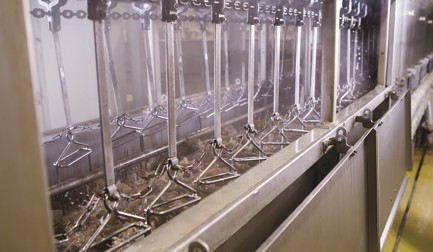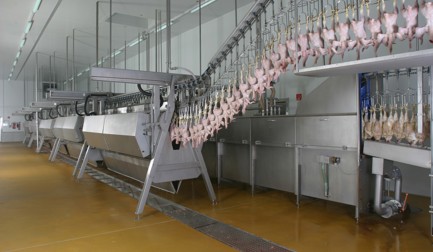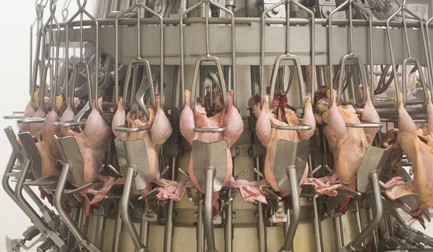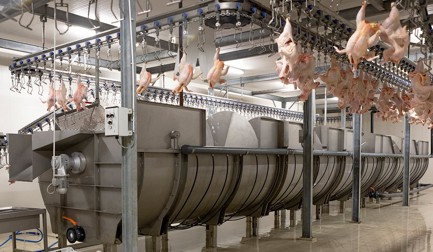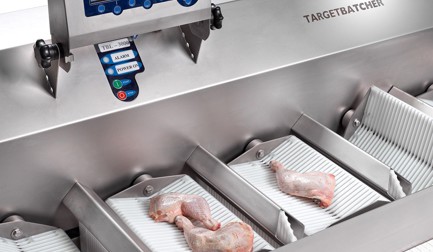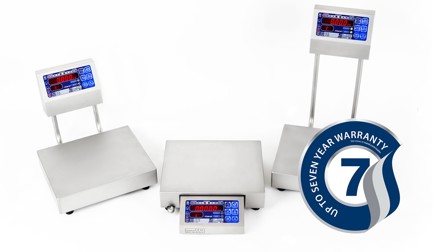
 Once products have been plucked and eviscerated, they must be chilled. How this is done will depend on how they are to be brought to market. If fresh, they will be chilled by air in a chilling tunnel; if deep frozen, they will be chilled by water in a counterflow screw chiller. Screw chillers are modular and can be extended easily.
Once products have been plucked and eviscerated, they must be chilled. How this is done will depend on how they are to be brought to market. If fresh, they will be chilled by air in a chilling tunnel; if deep frozen, they will be chilled by water in a counterflow screw chiller. Screw chillers are modular and can be extended easily.
Once chilled, products must be graded, weighed and packed. Some product will be cut into portions.
Initially, most operations will be carried out manually at work stations equipped with scales and bagging or other packing aids. At this stage, the equipment supplier’s main task will be to advise on good packing room layouts. Products should move smartly through the area to the cold store and should not be allowed to accumulate in unnecessary and unwelcome buffers.
As hourly throughputs climb, processors will graduate through belt graders, such as the Compact Grader, to a dedicated selection and distribution line, where whole products are graded, weighed and distributed automatically according to programs set by management. A further advantage of such a system is that it provides valuable information on the individual weight and quality grade of each product handled.





